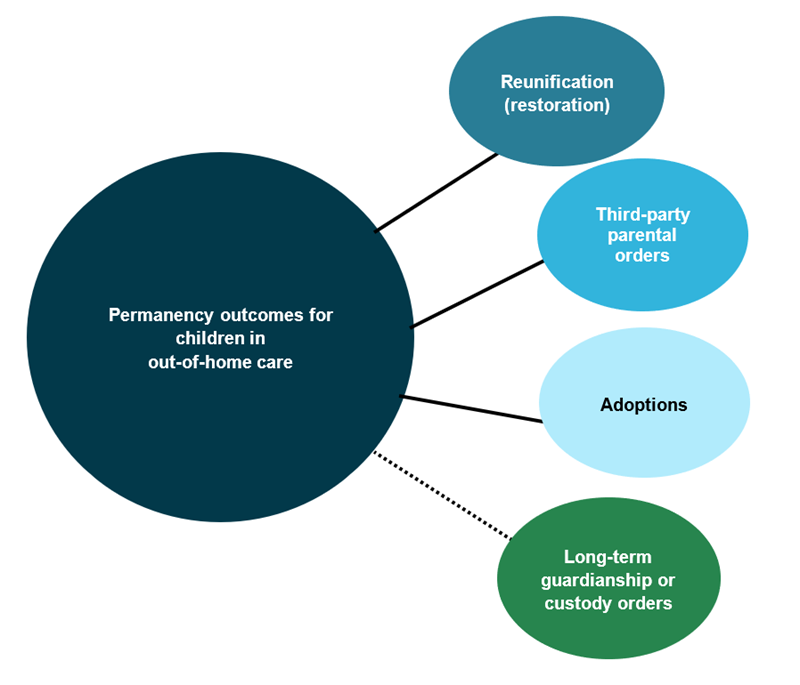Permanency outcomes
Key findings
- In 2020–21, 9,900 children in out-of-home care (17% of the 56,900 children in out-of-home care during 2020–21) achieved a permanency outcome.
- Just over 50% of children who achieved a permanency outcome in 2020–21, did so within 12 months of being admitted to out-of-home care.
- In 2020–21, around 5,400 children were reunified with family, 1,300 were placed in a third-party parental care arrangement and 94 were adopted.
What is permanency?
Permanency is aimed at reunifying children in out-of-home care with their families where possible. When family reunification is not possible, permanency planning efforts focus on placing children with another legally permanent family such as relatives, adoptive families who obtain legal custody, or guardians (Figure 6.1 shows permanency events; see also Osmond & Tilbury 2012).
Given the importance of ensuring stability and permanency for children, the Permanency Outcomes Performance Framework (POPF) (Prentice 2018; Seselja 2017) was developed to measure performance in out-of-home care with regard to permanency. The full set of POPF indicators previously reported in Child protection Australia will be released as a separate product later in 2022. Child protection Australia reports will focus on data for children exiting out-of-home to a permanency outcome such as reunification with family, placement in a third-party parental care arrangement or adoption, and the time taken to achieve the outcome.
Figure 6.1: Permanency events

Note: Refer to the glossary for an explanation of items.
Chart: AIHW.
Box 6.1 outlines data limitations and comparability issues for reporting on permanency.
Box 6.1: Data limitations for permanency
Some notable issues which affect the completeness and comparability of permanency data include:
- There is no nationally agreed definition for reunifications. As such, reporting of permanency events relating to reunification is based on local definitions of reunification.
- Third-party parental responsibility orders vary across jurisdictions with the biggest difference relating to the provision of ongoing case management in some cases in the Australian Capital Territory, New South Wales, South Australia and Queensland.
- Some measures can be affected by different thresholds across jurisdictions, which can affect comparability and interpretation.
- Further insights into the permanency data can be found in the Appendix B in Child protection Australia 2018–19 which outlines the methodology for permanency reporting.


